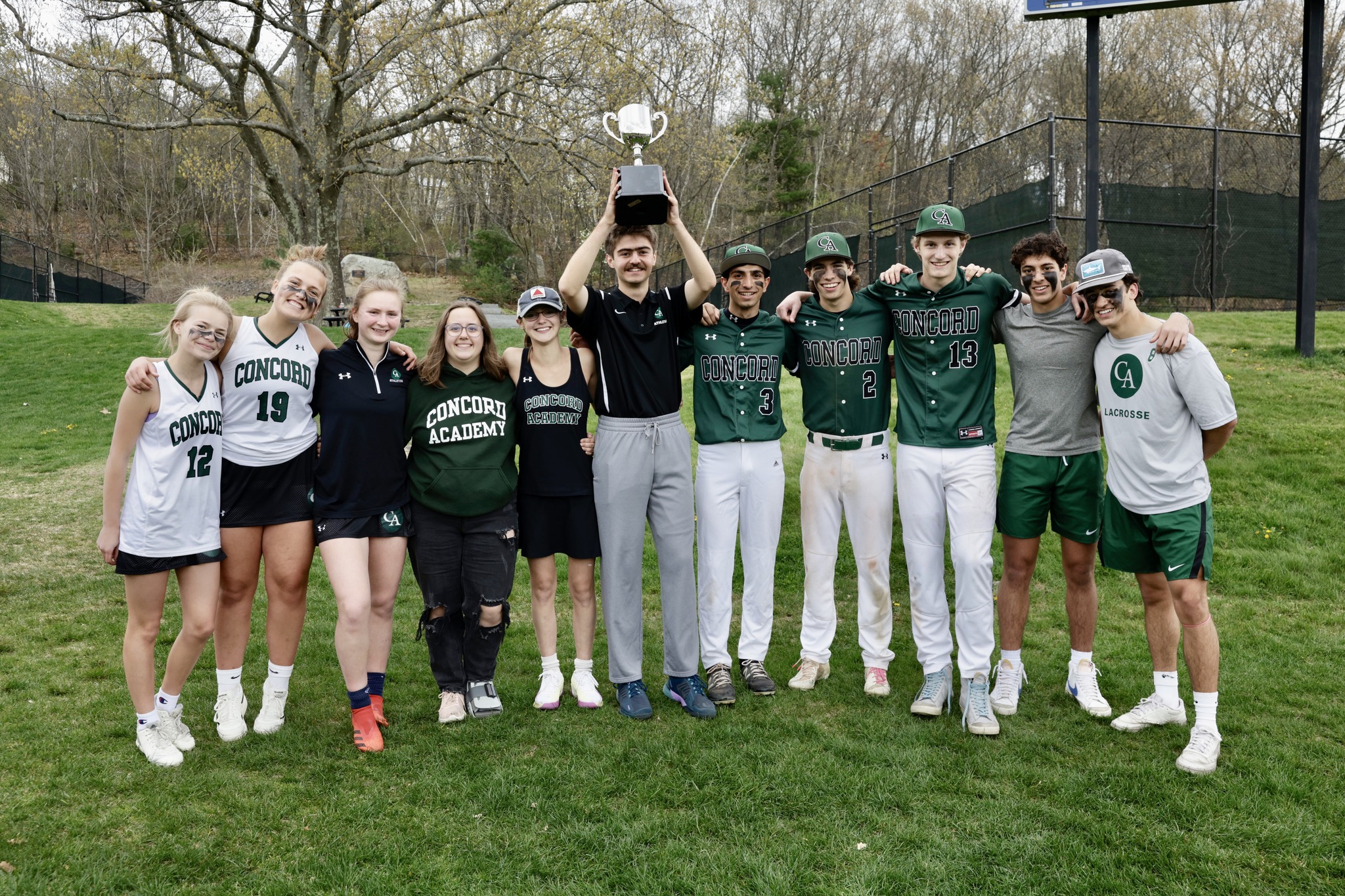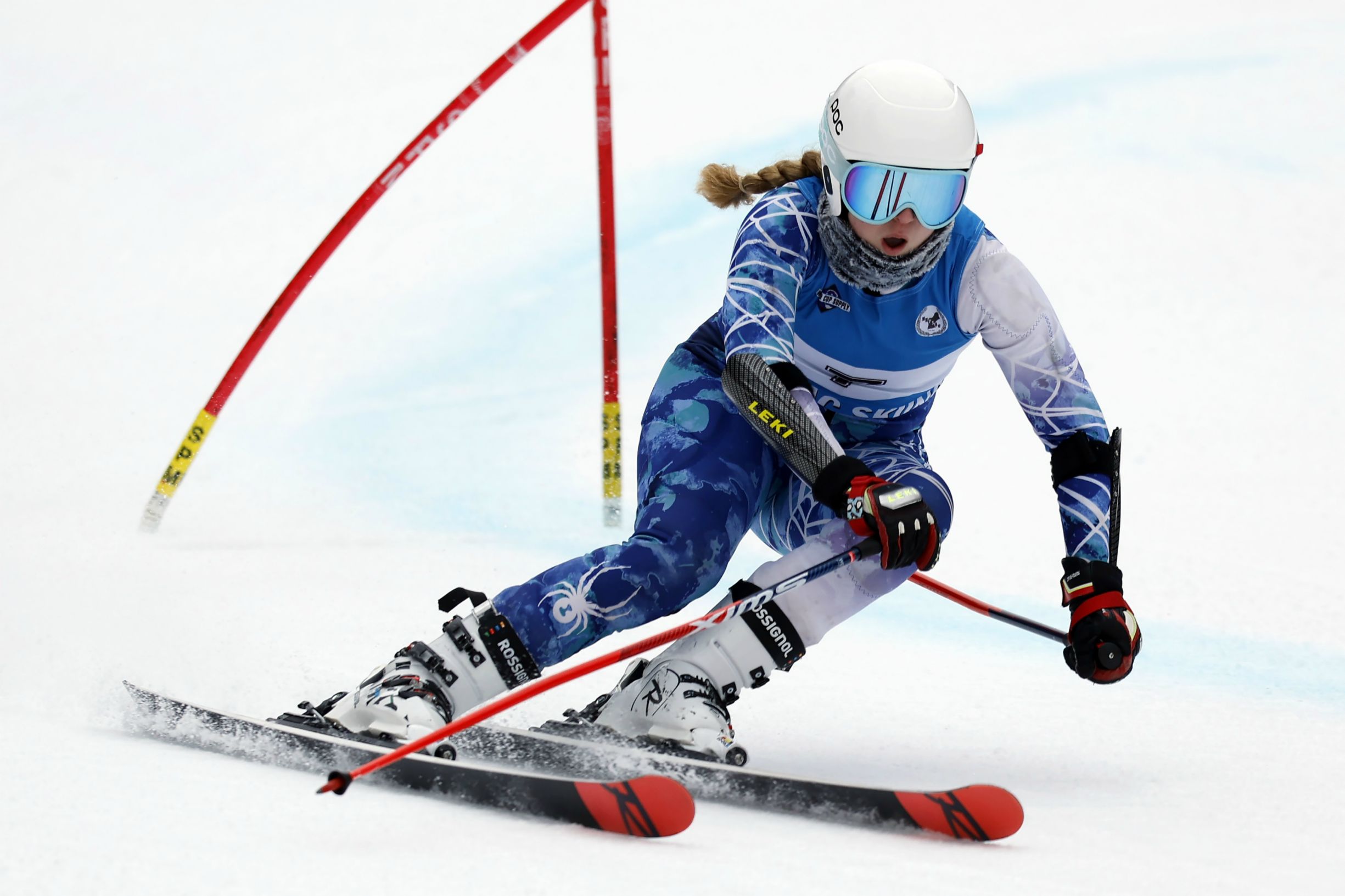Aaron Golub Assembly Centers Living and Thinking Differently

We all face unique challenges, limitations, and obstacles, but there are thousands of routes up the same mountain—more than we often think are possible. That was the central message guest speaker Aaron Golub shared with Concord Academy students on November 15, 2024. “Because you have a different challenge than the person sitting next to you, you probably have a different path,” he said.
As a Tulane University football player, Golub was the first legally blind Division I athlete to play in a game. He went on to become team captain and, later, an NFL free agent. Now he’s a consultant and entrepreneur who tells his story to help others transcend limiting beliefs.
Introducing Golub at the assembly, Grant Hightower, assistant head for student life, asked students to consider how members of the CA community “live, cope, celebrate, survive, and thrive differently.” He encouraged them to explore “the potential in our differences and not just the limitations that we perceive.”
Golub first gave the CA community a sense of his physical challenges. The greatest difficulties he faces are things others take for granted: crossing the street safely, cooking, and navigating new areas. Golub shared that, growing up, he struggled in school. He loved sports, but he “wasn’t athletic” and was consistently picked last. In 7th grade, he found football. Though he knew he could never play quarterback or other coveted positions, for the first time he was part of a team.
By 10th grade, he was a third-string junior varsity athlete who never touched the field. “I was sick and tired of letting being legally blind control my life,” Golub said. “I knew that I could be successful, but I had to start thinking differently.”
After learning about the specialized position of long snapper, he began training intensively: long snapping an hour before school, lifting weights every evening. “It paid off,” he said. By his senior year of high school, Golub was one of the top high school football players in Massachusetts.

Despite that success, he wasn’t recruited. Golub spoke about his anger at perceptions of his limitations and what the experience taught him. “Too many of us are focused on the judgments, the beliefs, and the opinions of other people around us,” he said. “It’s natural, especially when we’re in school. But at the end of the day, the only opinion, the only belief that matters is the one you have about yourself—not what someone else thinks of you, but what you think of you.”
Acknowledging he couldn’t make people believe in him, Golub focused on what he could do. He said he started cold-calling college coaches, looking for “one person, one coach, one team” that would give him a shot. Tulane did.
That wasn’t Golub’s final hurdle to clear. He had to prove himself to his teammates, then to a new coach, then—when facing sprints on a set of stairs he couldn’t navigate—to himself. In each instance, Golub shared how he was able to “work harder and work smarter” in pursuit of his dream, as well as to risk vulnerability in letting others know what support he needed. “Thinking differently” was what allowed him to overcome his obstacles, he said—especially the challenges and limitations others don’t face.
Golub said that if he had the chance, he would choose the exact same life, with all its limitations and everyday annoyances—because he had learned to stop asking, “Why me?” and start asking, “How is this happening for me?” Golub said he also learned how to strengthen teams and relationships, which has served his business well. “The best leaders are ones who help and support the people around them,” he said.
“Next time you have a challenge or you’re in a conflict, how can you think differently about it?” Golub asked CA students.
Twice during his interactive presentation, he invited students onto the P.A.C. stage to toss a ball. They wore goggles that simulated his visual impairment: no vision in the right eye, only a tiny hole in the left. Taking turns throwing and catching, the first two pairs demonstrated how difficult hand-eye coordination is when you can’t see your hands.
Later, when the same exercise repeated (with Head of School Henry Fairfax gamely in the mix), Golub gave a crucial difference in instruction: Focus on communicating. Even with such a small shift, the difference was remarkable.





